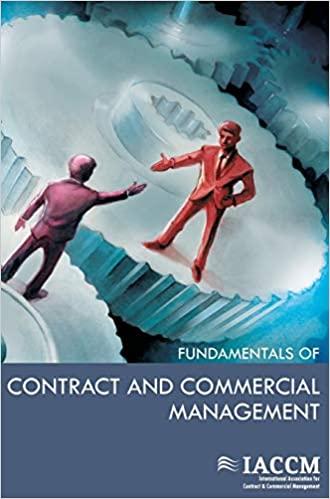Question
Scenario You work as the chief supply-chain officer at the large international corporation, NationaliTeas. NationaliTeas manufactures and sells tea worldwide. Its motto is Keeping people
Scenario
You work as the chief supply-chain officer at the large international corporation, NationaliTeas. NationaliTeas manufactures and sells tea worldwide. Its motto is "Keeping people and their taste buds awake (when they want to be awake)." Its mission is "Make the world more awake through rejuvenating and refreshing beverages and sustainable practices that uplift workers, communities, and souls." Its vision is "to be the most respected tea manufacturer across at least three continents for our tea and our actions, which will be driven by a commitment ethical sourcing, minimal waste, and empowerment of our employees."
You would like to establish an operational goal of having your corporation apply for a B Corp Certification within the next two years. You believe this would add value to the organization and help it to prioritize a stronger focus on sustainable operational practices. You have conducted a preassesment based on the recommendations for applying for B Corp Certification, and you've evaluated the corporation's current strengths and areas for improvement.
Now you need to develop a proposal for the board of directors that explains why prioritizing the triple bottom line (TBL) through working toward B Corp Certification has organizational value. You must also propose three high-impact initiatives to help strengthen the corporation's commitment to people, planet, and profit based on your evaluations.
Directions
- Part One: Justification of Benefits: Justify the value of working toward more intentionally incorporating the TBL framework into organizational decision making, specifically how ethical business practices regarding people, planet, and profit can benefit society, the environment, and the company's profit. Specifically, address the following:
- Key Components: Explain the three key components of the TBL framework and how each component benefits businesses and society.
- Organizational Value: Provide a justification regarding the value and benefits of using the TBL framework to inform corporate decision making, and explain connections between the organizational mission and the organizational vision.
- B Corporation Benefits: Briefly describe the organizational benefits of attaining B Corp Certification.
- Part Two: Operational Recommendations: Read through the Preassessment Evaluation Summary (located in the Supporting Materials section) for each aspect of the TBL (people, profit, and planet). You will need to provide a detailed description of the initiatives that will create the needed improvement. You should note the organizational and societal value of the initiative along with the operational management techniques recommended to plan and complete each initiative. For each of your three initiatives, address the following:
- Organizational Impacts: Describe the organizational benefits of each initiative, specifically noting the expected positive impact of completing each. Examples of positive impacts include better alignment to the organization's mission, vision, and culture statements; increased amounts of funds or resources saved; and improvements to the organization's brand.
- Societal Impacts: Describe the societal benefits of each initiative, specifically noting the expected positive impact of completing each. Examples of positive impacts include increased community building and positive environmental impact.
- Customer Impacts: Describe the consumer benefits of each selected initiative, specifically noting the expected positive impact of completing each. Examples of positive impacts include increased alignment to target markets, improved product access and availability, and improved customer satisfaction.
- Business Risks: Explain the business risks associated with prioritizing, planning, and resourcing each initiative and how these risks will be considered and monitored.
- Operational Management Techniques: Recommend an operational management strategy or technique (e.g., project management, lean manufacturing, or Six Sigma) that is appropriate to implement for each selected initiative, and explain why.
- Defining Requirements and Scope: Define the requirements for the successful implantation of each selected initiative as well as the scope of each. Describe how changes to the requirements and scope would impact timelines, budget, and risk.
- Roles and Responsibilities: Explain the key internal and external stakeholders who would be involved in planning and implementing each selected initiative, as well as why each identified stakeholder is needed to successfully implement the initiatives.
Step by Step Solution
There are 3 Steps involved in it
Step: 1

Get Instant Access to Expert-Tailored Solutions
See step-by-step solutions with expert insights and AI powered tools for academic success
Step: 2

Step: 3

Ace Your Homework with AI
Get the answers you need in no time with our AI-driven, step-by-step assistance
Get Started


